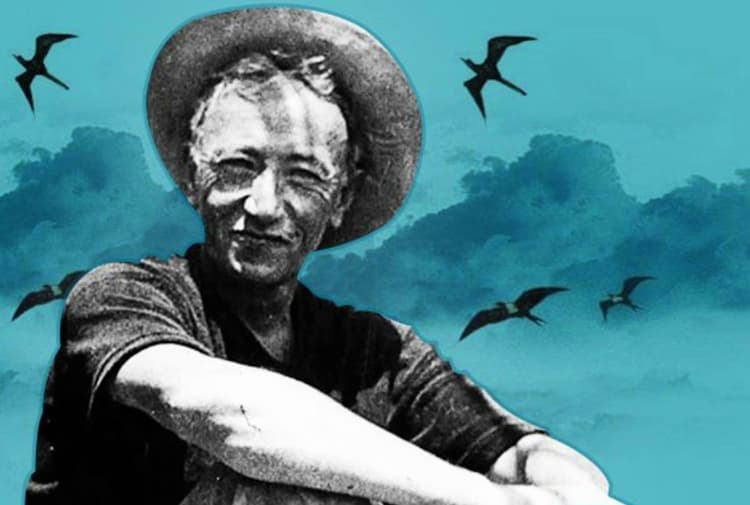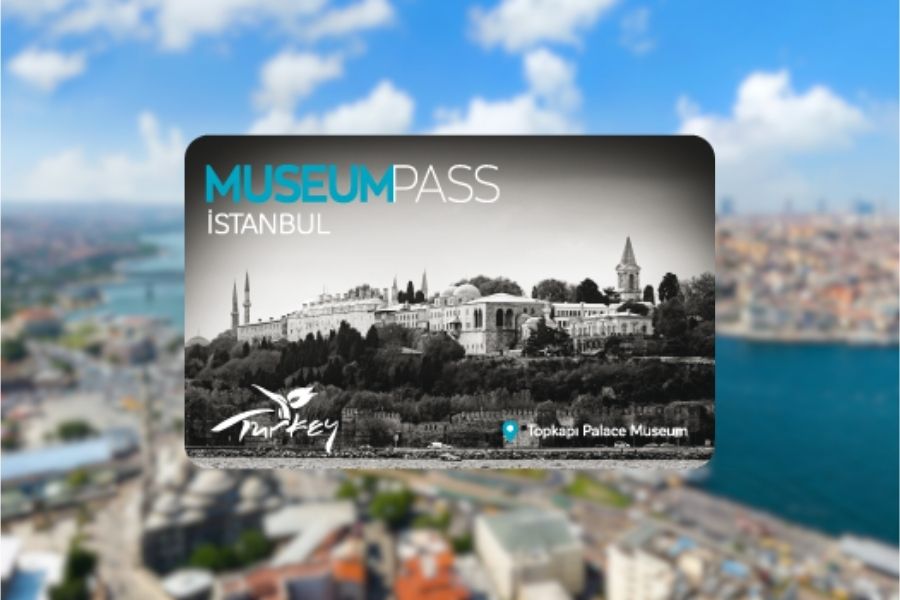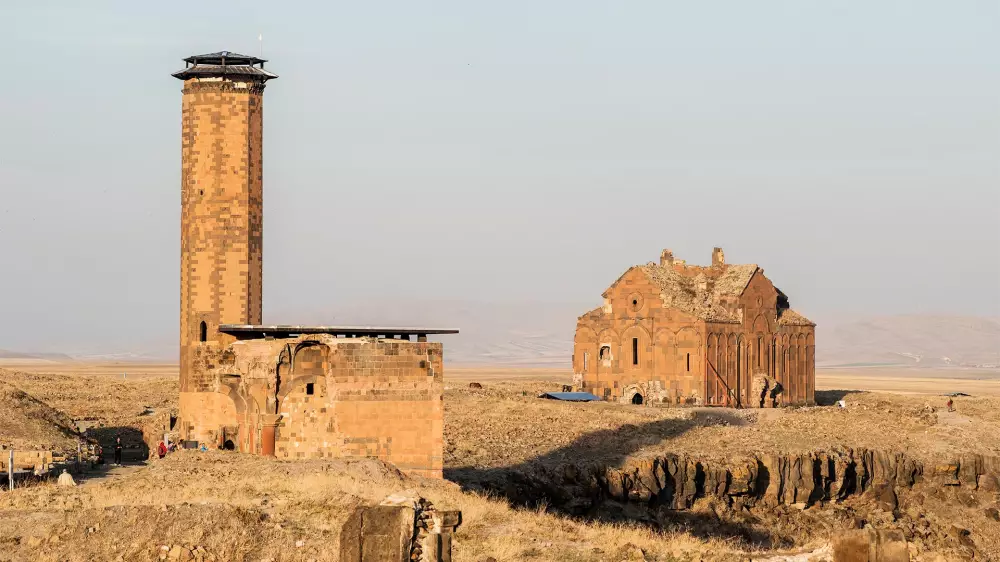
Getting to Know Istanbul Again: Sait Faik’s Footprints in Istanbul
Table Of Contents
Would you like to reacquaint yourself with "Seven-Hilled" Istanbul, a city full of mesmerizing beauties in every district, along with the traces of Sait Faik Abasıyanık, the Turkish short story and novel writer, as well as a poet?
In this article, titled "Sait Faik’s Footsteps in Istanbul," we have drawn up an Istanbul travel route intertwined with the life of the master storyteller, Sait Bey. By following this route, crafted with words, you can learn about the areas where Sait Faik lived in Istanbul and the historical buildings nearby, which have stood the test of time from the past to the present.
We believe that you will definitely want to include this travel route, which offers many natural, architectural, and historical sights from different regions of Istanbul, in your "places to visit in Istanbul" list. Are you ready for a "life story" that stretches from Istanbul's busiest districts to its most tranquil corners with Sait Faik?
A Glimpse into Sait Faik’s Life
Before talking about the neighborhoods where Faik Bey lived in Istanbul, let’s briefly touch on his life.
Sait Faik Abasıyanık was born on November 12, 1906, in Adapazarı. In 1924, his parents, Makbule Hanım and Mehmet Faik Bey, moved to Istanbul with their son. This period coincided with Sait Faik’s high school years.
Sait Faik studied for a while at Istanbul Erkek Lisesi, then continued his education at Bursa Erkek Lisesi, where he graduated. He later completed his higher education at Istanbul University, in the Department of Turkish Language and Literature.
As Sait Bey embarked on life, he worked at different times as a Turkish teacher and shopkeeper. However, his passion for writing always stood at the forefront of all these endeavors. Between 1936, when his first work "Semaver" was published, and 1954, the last year of his life, he produced valuable works in the fields of novels, poetry, short stories, and translation.
Sait Faik Abasıyanık passed away on May 11, 1954, at 2:35 AM and was buried in Zincirlikuyu Cemetery.
Now that we have briefly touched upon the life of one of the masters of Turkish literature, Faik Bey, let’s begin rediscovering Istanbul through his footsteps.
From Adapazarı to Istanbul: Şehzadebaşı
Sait Faik and his family first lived in the Şehzadebaşı/Fatih district of Istanbul. One of the city’s busiest neighborhoods, Fatih had a population of 382,990, according to the latest data reported in 2021. In addition to its local population, the district also hosts foreign tourists, resulting in a fluctuating population at certain times of the year due to tourism activities.
Şehzadebaşı, where Sait Faik once lived, is located near areas such as Unkapanı, Vezneciler, and Saraçhane. While tracing his footsteps and observing Istanbul, you can also visit many nearby places of interest, which attract tourists' attention. For those who enjoy nature, history, and cultural landmarks, here are some recommendations in this area:
- Şehzadebaşı Mosque (includes the tomb of Şehzade Mehmet)
- Saraçhâne Park (featuring playgrounds, fountains, and aqueduct views)
- Burmalı Mescit Mosque (a historic structure in Ottoman and Islamic architectural style)
- Kalenderhâne Library (with sections for seminars, events, a children's library, and a cafeteria)
- Fatih Monument Park (featuring a statue of Sultan Mehmet the Conqueror on horseback, Roman aqueducts, and a playground)
- Saraçhane Archaeology Park (an area displaying historical ruins)
The Nostalgic Burgazada Mansion Turned into a Museum
By purchasing a mansion in Burgazada, Mehmet Faik Bey opened the door to the third-largest of the Princes' Islands in Istanbul for master storyteller Sait Faik. The family initially used this mansion as a summer house. Later, it became a permanent residence for Makbule Hanım, although Sait Bey would only come to the mansion during the summer months.
After Sait Faik's death, the mansion was transferred to the Dar'üş-Şafaka Society under the condition that it be turned into a museum. Another condition was to hold a short story competition in Sait Faik Abasıyanık's name. In line with these requests, the society inaugurated the "Sait Faik Abasıyanık Museum" on August 22, 1959. The "Sait Faik Story Award," initiated by Makbule Abasıyanık, continues to be organized annually by the Dar'üş-Şafaka Society today.
For those following Sait Faik’s footsteps and exploring the rich history of Burgazada, our first recommendation is, of course, the Sait Faik Museum. The mansion’s bright white exterior and its garden filled with trees evoke a sense of nostalgia while bringing forth an atmosphere of tranquility.
Inside the museum, you will find Sait Faik’s handwritten notes, clothes, hat, shoes, and identification card, along with many other personal belongings. A statue of Sait Faik placed in front of the museum further enhances the mansion’s vibrant and captivating appearance.
In accordance with the author's will, no entrance fee is charged to visit the Sait Faik Museum.
Museum visiting days and hours: The museum is open every day except Mondays and Tuesdays, and accepts visitors from 10:00 AM to 7:00 PM.
You can easily reach the museum by enjoying a pleasant sea voyage to Burgazada. Additionally, other points of interest on Burgazada include:
- Burgazada Sanatorium (founded in 1928, one of Turkey’s oldest sanatoriums)
- Hristos Monastery and Hill (ancient architecture, museum, church)
- Burgazada Mosque
- Aya Yani Church
- Aya Yorgi Monastery
If you're considering exploring the island's public and private beaches, you can choose from unique spots such as:
- Madam Martha Bay
- Kalpazankaya Beach and Restaurant
- Mimi Bay
- Burgazada Dreams Beach and Camping Area
- Burgazada Public Beach
A Life in Şişli: İkbal and Rumeli Apartments
The family lived for a time in Rumeli Apartment on Rumeli Street in Osmanbey. Later, they moved to "İkbal Apartment," which was purchased by Mehmet Faik Bey in the same area. During that time, the street was known as "Kırağı Street," but today it is called "Nakiye Elgün Street."
While Sait Faik spent his summers with his mother, Makbule Hanım, on Burgaz Island, he lived in İkbal Apartment during the other months. This apartment, one of the homes where Sait Faik lived, reflects its deep historical character through its impressive architecture.
Following Sait Faik’s traces in this area will bring you to a lively part of the city, where you can easily find many things during your visit. Restaurants, cafes, shopping centers, banks, natural and historical landmarks, and much more are all nearby.
Here are some of the key attractions:
- Atatürk Museum
- Harbiye Military Museum
- Şişli Mosque
- Maçka Park
- Ara Güler Museum
- St. Esprit Cathedral
From the Walls of the Golden Horn: Odunkapısı Yokuşu/Fatih
The person who led Sait Faik to the Odunkapısı area in the Fatih district was his father, Mehmet Faik Abasıyanık. Mehmet Faik Bey opened a shop here for his son to engage in grain trading. Through this shop, we trace Sait Faik’s footsteps to Odunkapısı, one of the 55 gates of Istanbul.
Odunkapısı is located in a very central area, allowing easy access to many nearby historical attractions. Some key places to visit in this region include:
- Egyptian Bazaar (one of Istanbul’s oldest covered markets, dating back to the 17th century)
- Rüstem Paşa Mosque (a historical mosque famous for its tiles)
- Süleymaniye Mosque (where the tomb of Sultan Suleiman the Magnificent is located)
- Süleymaniye Bathhouse (a historical bathhouse from the 16th century)
- Molla Zeyrek Mosque (a former church, dating back to the 12th century, reflecting Byzantine architectural style)
- New Mosque (a historical structure from the 17th century)
As we conclude our journey through the footsteps of Sait Faik, one of the cornerstones of Turkish literature, we would like to recommend one of his books to you. The book is titled Semaver.
It is a collection of 20 stories that you can read without getting bored, offering enjoyable moments. Some of the stories in the book are titled Semaver, The Ship of Stelyanos Hrisopulos, Meserret Hotel, Four Stories of a Shore, Fear of Love, and A Ferry.
Written by: Tuğçe Arıcan



